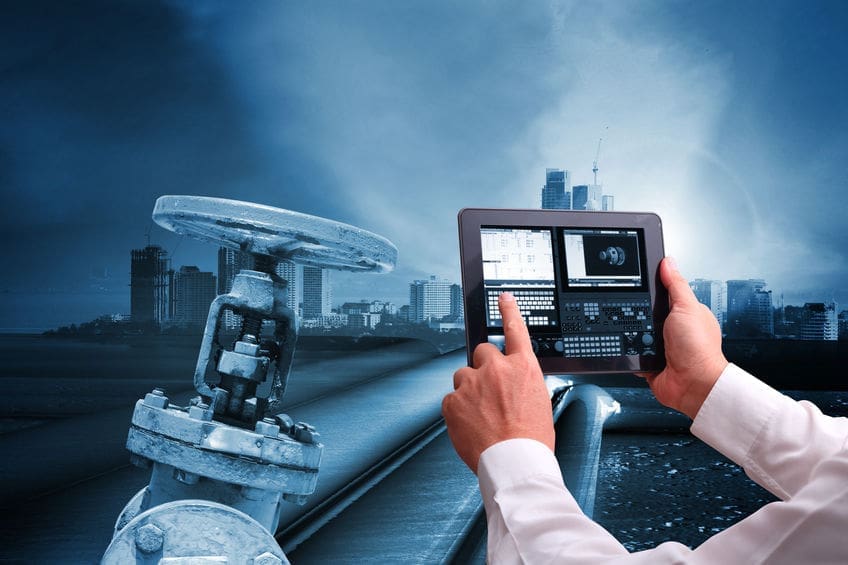In today’s society, technology has become the new norm, with many businesses integrating technological software into their operations, regardless of the industry. Technology has proved beneficial to business in terms of improved operations and cost. The oil and gas industry has also been able to improve operations and reduce costs as a result of technological software.
As of recent, technology has been making waves in the areas of pipeline safety and oil and risk management in the oil and gas industry. Businesses are investing in advanced software, such as robotics and automation, to increase pipeline and worker safety and the efficiency of operations.
SolSpec, a software company that specializes in the processing and analysis of photogrammetry and LiDAR data, develops oil and gas software to improve pipeline construction and oil operations. Bryan Crowe, Chief Operating Officer of SolSpec, provided his perspective on how technology is shaping safety and oil management in the oil and gas industry, how modernized the industry has become as a result of technological software, and what SolSpec is doing to impact the industry.
With technology playing a larger role in the oil and gas industry, there has been an increased demand for technological software. As such, more oil and gas solutions companies have been established with many focusing on pipeline safety and risk prevention. SolSpec, founded in 2016, was created with the goal of empowering more efficient and effective use of drone imagery and analysis to improve the safety, profitability and environmental stewardship of pipeline construction, operations, and other large-scale land use projects. Crowe expressed that after initially collecting data for a year, they realized the need — and opportunity, to improve the speed of processing, storage and analysis of data. “Today, SolSpec specializes in the processing and analysis of photogrammetry and LiDAR data from Unmanned Aerial Vehicles, Manned Aircraft, and Satellite systems. We’ve developed a secure cloud-based geoprocessing platform and propriety analytics models based on analysis of over 2 million acres of pipeline right-of-way projects to create high-resolution 2D and 3D models for comprehensively visualizing and quantifying risk to pipeline safety by measuring changing conditions, hydrology, erosion control, and slip potential,” Crowe explained.
One of the biggest threats to operational safety in the oil and gas industry is pipeline construction and stability. As Crowe stated from a report, “Between 1999 to 2018, PHMSA reported a total of 11,991 incidents of compromised pipeline integrity, resulting in 318 deaths and 1,304 injuries, with over $8 billion USD in total cost.” From the past up until recently, traditional methods of operation and poor construction of pipelines has led to fatal incidents. Crowe expressed how operators need a more comprehensive, data-driven method to evaluate risk that goes beyond the physical pipe and includes its environmental context. “Identifying environmental conditions on and off the ROW that may threaten the integrity of pipeline infrastructure is crucial for timely mitigation and adequate preparation for future challenges,” Crowe explained.
With that said, advancements in technology and software, along with the ability to utilize data to mitigate risks, has persuaded many oil and gas operators to integrate technological solutions into their processes and modernize operations. Oil and gas businesses have begun to see the positive effects technological software can have on pipeline safety and operations. As Crowe stated, “Just as ILI technology is changing the way operators conduct internal pipe inspections, aerial analytics technology will transform external pipeline risk assessments and environmental inspections through Right of Way Integrity Management (RIM).”
With an increase of emerging technologies, the oil and gas industry is undergoing a rapid digital transformation. “Digital transformation is sweeping the oil and gas industry as more companies embrace technology to drive vast improvements in productivity, better system efficiency, savings from reduced resource usage, and fewer spills and emissions,” Crowe expressed. As for pipeline improvements and risk reduction, aerial technologies such as drones and UAVs are what oil and gas operators are increasingly investing in and utilizing to collect data and improve worker safety and training. Crowe described how innovation through cloud platforms, ultra-high spatial resolution aerial imagery, AI and machine learning, predictive analytics and big data are opening up new opportunities to transform pipeline integrity management, help reduce risks, and accelerate time to value. “Data is available to provide operators with fast and accurate analytics for them to make timely decisions to protect the safety of their employees and the public, the environment, and to maximize operational efficiencies,” Crowe further explained.
Even with more oil and gas operators integrating advanced technologies, including aerial analytics into their operations, the oil and gas industry, as a whole, has not fully embraced drone technology. As Crowe mentioned, “Aerial analytics are instrumental to ROW Integrity Management. I think there’s a general misconception about ROI of Aerial Analytics that has been carried over from when drones first hit the market for commercial use.” “Drones improve employee efficiencies and create a safer work environment by removing employees from hazardous environments. If armed with a drone, a typical pipeline technician can easily cover 10 miles of inspections,” Crowe explained.
With that said, SolSpec is continuing its focus on expanding the use of aerial technology and analytics in the oil and gas industry. “We continue to optimize our ROW Integrity Management solution with region-specific environmental and geological conditions. Our models and analysis consider factors as specific regional population density, product type, class location, potential impact radius, and environmentally sensitive areas and summarize this into simple, actionable intelligence,” Crowe explained. Crowe also stated how SolSpec is expanding into construction monitoring, vegetation analysis, change detection, and optimized LiDAR processing. “We are rolling out our new data viewing platform later this year that will greatly improve aerial analytic processing for our customers,” said Crowe.
SolSpec, along with other oil and gas solution companies, are taking the initiative to improve and modernize the management of oil and gas and the industry as a whole. Nevertheless, there are still many ways the industry can improve and further modernize operations. Crowe shared how the transition from reactive disaster management to proactive disaster risk reduction is where the industry can make huge advances. “A RIM program informed by aerial analytics increases the efficiency of pipeline technicians, facilitates emergency response, and identifies key areas for focused resources and efforts in hazard mitigation. Armed with these insights, operators can prioritize risk mitigation and monitoring to take proactive actions where they are needed most,” Crowe explained further.
With emerging technologies still on the horizon, there are plenty of opportunities of modernization for the oil and gas industry. As for the use of drones in oil and pipeline management, Crowe expressed how BVLOS or beyond visual line of sight restrictions prohibit drones to be utilized for large scale data acquisition. “By removing visual line of site restrictions drone operators will be able to more quickly analyze their pipelines and other assets to provide supplemental emergency response, predictive maintenance, and ongoing integrity verifications,” said Crowe.
With technology’s breakthrough in the oil and gas industry, the industry has seen improvements in capturing data, oil management, revenue and risk prevention. The industry’s processes today are more modernized than in the past, but still have a long way to go. According to Crowe, “Greater acceptance of new technologies by regulatory bodies would also help in modernizing oil and gas operations.”
Crowe emphasized that modernization is extremely important for the oil and gas industry. With the rapid development of technological software, the industry is sure to see more progression in the near future. “Technology is impacting every aspect of the oil and gas industry. Operators that harness the power of technology are seeing real benefits to their safety numbers and their bottom line. Those who are late to the game are operating at a disadvantage. Real time and near real time analysis of operations are making the oil and gas industry a safer and much more efficient industry,” said Crowe.
Tonae’ Hamilton has been a contributor and associate editor to the magazine for two years. She has been writing professionally for almost four years. In her free time, Tonae’ likes to spend time with her three pets, cook, and binge-watch Netflix shows. Tonae' has a Bachelor of Arts in Communication from McDaniel College.










